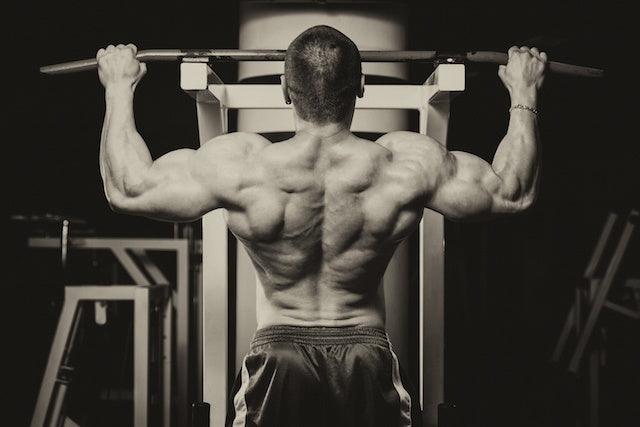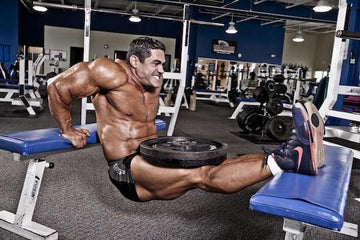Best Way to Build Muscle
Increasing muscle mass requires workouts to be of a high volume, meaning a higher number of sets and repetitions. Most sets need to be taken to complete fatigue which in turn stimulates the muscle-building process. Most newbies in the gym are confused with all the workout plans, is it better to lift heavier weight for muscle mass or lighter weight with more reps. Contrary to popular belief of many people going to the gym, you can build muscle tissue with moderate weights and high reps just as much as training with max poundage. In a recent study conducted at the University of Ontario, researchers took two groups of men and compared the cellular response for muscle growth and recovery using either light-to-moderate weights with high volume (15–20-rep range), or lifting heavy weights with less volume (6–10-rep range). Researchers found that whether the men lifted with 30% of their maximum weight until muscles were completely exhausted, or 80% of their maximum until their arms and/or legs were exhausted, both groups developed very similar cellular changes related to muscle growth, meaning that both routines produced similar results. But, according to researchers, lifting the lighter weights built more muscular endurance than lifting with fewer reps and heavier weights. Also, the greater work volume in the light-to-moderate group resulted in more calories burned, leaving them in better overall physical condition than the heavy lifters.
Protein Synthesis Responses to Heavy and Light Training
One of the first studies back in 2009 provide support for the concept of a dose response relationship between external work-equated exercise intensities and muscle protein synthesis. Interestingly, they did not find that after 60% of a 1-RM there was no further increases in muscle protein synthesis. Muscle protein synthesis reached a plateau between intensities of ∼60– 90% of 1RM. The researchers found that going heavier than 60% of a 1-RM did not lead to further increases in muscle protein synthesis. A important finding was that going to maximum muscle failure was an important stimulus for maximizing muscle protein synthesis. Another laboratory has recently tested the thesis that eliciting muscle failure during resistance exercise during high- or low-intensity resistance exercise leads to maximal muscle fibre activation, and thus a similar stimulation of muscle protein synthesis. It was demonstrated, in resistance-trained young men, that lower intensity (30% of 1RM) and higher volume (average of 24 reps) resistance exercise performed until failure was equally effective in stimulating myofibrillar protein synthesis rates during 0– 4 h recovery as heavy intensity (90% of 1RM) and lower volume (5 repetitions) resistance exercise. The observation of a sustained elevation in myofibrillar protein synthesis rates after the low-intensity–higher volume regime corroborates recent data demonstrating that exercise volume is an integral factor for sustaining the myofibrillar protein synthetic response during exercise recovery. So based on the research, its possible to increase muscle mass with lighter weights while training. The newest research has just been published showing the lite weight training can increase muscle mass to a similar extent as heavier training.

Researchers compared the effect of low- versus high-load resistance training (RT) on muscular adaptations in well-trained subjects. Eighteen young men experienced in RT were matched according to baseline strength, and then randomly assigned to 1 of 2 experimental groups:
a light weight RT routine (LL) where 25-35 repetitions were performed per set per exercise.
or a heavy weight RT routine (HL) where 8-12 repetitions were performed per set per exercise.
During each session, subjects in both groups performed 3 sets of 7 different exercises representing all major muscles. Training was carried out 3 times per week on non-consecutive days, for 8 total weeks. After eight weeks, both heavy-weight and light-weight conditions produced significant increases in thickness of the elbow flexors (5.3 vs. 8.6%, respectively), elbow extensors (6.0 vs. 5.2%, respectively), and quadriceps femoris (9.3 vs. 9.5%, respectively), with no significant differences noted between groups. So both the heavy and light weight group made similar increases in muscle mass, however, improvements in back squat strength were significantly greater for heavy weight compared to light weight (19.6 vs. 8.8%, respectively) and there was a trend for greater increases in 1RM bench press (6.5 vs. 2.0%, respectively). Upper body muscle endurance (assessed by the bench press at 50% 1RM to failure) improved to a greater extent in light weight compared to heavy weight (16.6% vs. -1.2%, respectively). These findings indicate that both heavy weight and light weight training to failure can elicit significant increases in muscle hypertrophy among well-trained young men; however, heavy weight training is superior for maximizing strength adaptations.
So to sum up the research, training with heavier weights led to greater gains in strength and muscle mass, whereas training with lighter weights led to increases in muscle mass but the strength gains were not as good. If you have been training heavy for a while, switching over to light weight training can result in similar gains in mass while your joints rest.
Schoenfeld BJ, Peterson MD, Ogborn D, Contreras B, Sonmez GT. Effects of Low- Versus High-Load Resistance Training on Muscle Strength and Hypertrophy in Well-Trained Men. J Strength Cond Res. 2015 Apr 3.
MUSCLE MEDIA MAGAZINE FOR MEN
The premier source of training, nutrition, supplements, fat loss and health for men.





















